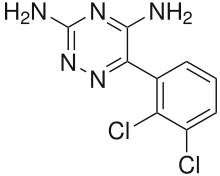Pregnant women with epilepsy should not rule out continuing lamotrigine therapy due to concerns that exposure could increase the risk of orofacial clefts (OCs) in their babies, say investigators.
Their findings indicate that the excess risk of OC is less than one in every 550 babies exposed to lamotrigine and therefore they do not support the sixfold increased risk suggested by the North American antiepileptic drug registry in 2006, a signal that led to warnings of the risk being added to patient information.
Helen Dolk (Ulster University, UK) and team looked at data from 21 EUROCAT congenital anomaly registries on more than 10 million births spanning 16 years, including from 2006 onwards when lamotrigine exposure was nearly three times more prevalent.
Congenital anomalies were identified in 226,806 babies and within this group 147 with nonchromosomal anomalies had been exposed to lamotrigine within the first trimester of pregnancy.
Exposure to lamotrigine monotherapy was not associated with a significant increase in the incidence of any OC, isolated OCor cleft palate specifically, with odds ratios of 1.31, 1.45 and 1.69.
"Our estimate of the risk of OC relative to other anomalies is nonsignificant with an upper confidence limit of 2.3", reports the team in Neurology.
They add: "Our results concur with other studies published since the original signal, which do not find a large excess of OC or cleft palate."
They suggest that the difference compared with the North American findings may be due to use of a larger baseline population risk of OC of 1.4 per 1000, compared with 1.1 per 1000.
"The size of the original OC signal may also have been a chance finding, or exacerbated by coexposures", the researchers suggest.
Dolk and colleagues also studied the risk of club foot among the sample, having found a significant excess in a previous study. While the current data gave a significant 83% increased risk with lamotrigine exposure, data from an independent study population of 6.3 million births mainly from 2006 on wards found no increased risk.

Epilepsy drug exposure does not increase newborn orofacial cleft risk: Pregnant women with epilepsy should not rule out continuing lamotrigine therapy due to concerns that exposure could increase the risk of orofacial clefts in their babies, say investigators.




